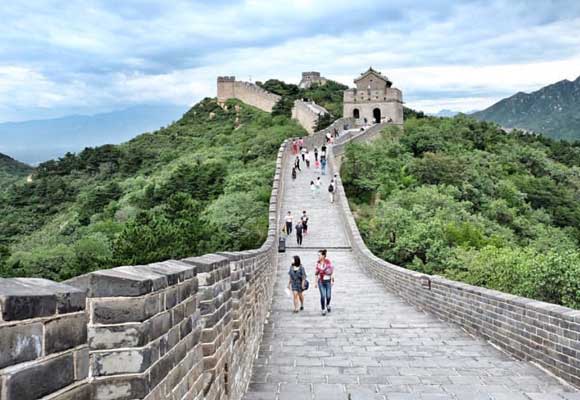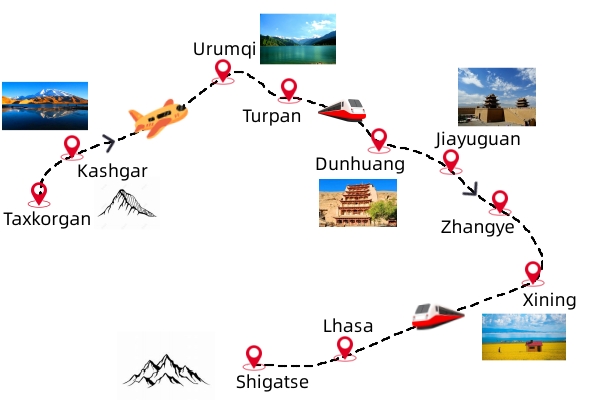20 Great Pieces Of Advice To China Culinary Heritage
20 Great Pieces Of Advice To China Culinary Heritage
Blog Article
Top 10 Tips To Explore Local Cuisines In China
1. Learn about the eight culinary traditionsTip Learn about the eight main Chinese food items: Sichuan (Cantonese), Shandong (Jiangsu), Fujian (Fujian), Hunan (Anhui) and Zhejiang. Each region has its own distinct flavor as well as dishes and cooking techniques.
Pro Use it to plan your meals by what you enjoy.
Con: It is difficult to recall every single detail of the cuisines.
2. Get a taste of local dishes
Explore the local specialties Try the regional specialties, such as Peking Duck (in Beijing), Xiaolongbao or Hot Pots in Chengdu.
Pro: A culturally rich authentic dining experience is certain.
Con: It can limit your ability to explore other cuisines in the region you're visiting.
3. Experience the regional flavor
Tips. Sichuan cuisine has a hot, numbing flavor. Cantonese is light, fresh and tasty. Jiangsu's food is delicate and sweet. They are also gentle. Pick dishes according to the tolerance to spice and your preferences.
You can avoid ordering food that isn't your preferences.
Con: Some flavors may be acquired tastes and may require some experimentation.
4. Explore Street Food
Tips: Every city has distinct street food options such as Jianbing (savory crepes) in Beijing or Roujiamo (Chinese hamburgers) in Xi'an. Explore the local cuisine and try some of the snacks.
Pros Street food is inexpensive convenient and provides a glimpse into local daily life.
Cons: Hygiene could be an issue at times; choose vendors that have high turnover.
5. Learn Basic Dining Etiquette
Tip: Understand Chinese eating habits including sharing food in a family setting and not putting chopsticks in rice.
Pro This is a sign of respect for local traditions, and it can enhance your dining experience.
Con: It takes time to learn and adapt to a new etiquette.
6. Ask Locals for Recommendations
Locals are usually the most knowledgeable people to approach for recommendations on restaurants or dishes. Ask for advice.
Cons: You won't be able find the hidden gems.
Cons: Language barriers could create communication difficulties.
7. Be prepared for unfamiliar ingredients
Taste regional cuisines made with exotic ingredients like bamboo shoots, stinky tofu or lotus root. Explore new food items with curiosity.
Pro: Increases your knowledge of Chinese culture by expanding your palate.
Con: You may not be a fan of all the food or have dietary limitations.
8. Accommodate Dietary Restrictions
Learn Mandarin phrases to avoid allergies or preferences. "Wo Chi Rou", (I don't like meat) is a great example.
Pro: A safer dining experience that is designed to meet your requirements.
Con: Certain restaurants have a few options for those who are restricted in their diet.
9. Mix regional drinks with your food.
Explore local drinks like Shaoxing wine in Zhejiang or tea in Fujian.
Pro: It improves and compliments the dining experience.
Cons: Some people may not like the strong flavors of baijiu.
10. Avoid Overordering
Tip: Chinese meals are usually served in a family-style setting. Order conservatively, and then increase as needed.
Pros: It reduces food waste, and allows you to sample multiple food items.
Con: You might be tempted to buy too much due to the range.
Benefits of Experiencing regional Cuisines in China
Diverse Flavors Enjoy an amazing variety in tastes, techniques, ingredients and much more.
Cultural understanding: Learn about regional identities and the traditions.
Cheap: Local cuisine and snacks can be found at a reasonable cost.
Memorable Experiences: Savouring iconic dishes from their place of origin can create lasting memories.
Pros and Cons of Exploring Regional Cuisines in China
Hygiene concerns. Certain street foods or small restaurants might not be up to international standards for cleanliness.
Language Barriers: The menus and descriptions are typically only in Mandarin. It makes it difficult to place orders.
Certain people may have difficulty with certain tastes or textures.
In certain areas, strict vegetarians, people who suffer from food allergies, as well as vegans may have difficulty.
By following these tips and being adventurous and adventurous, you will be able to enjoy the many and delicious varieties of Chinese regional cuisines, while overcoming any obstacles along the way! View the best plan your adventure to this iconic spot for site advice including shopping in nanjing, mount li a royal garden since the zhou dynasty, eating in shangri la, a wonderful landscape painting lijiang river, chinese stone lion the common ornament in chinese traditional architecture, naked marriage in china the most fashionable wedding style for the 1980s, ancient dapeng fortress, some gifts from china, wuzhi mountain wuzhi shan five finger mountain, weaponry of iron age iron cannon iron armour and warships and more.
Top 10 Tips For Photography And Fees When Traveling To Temples In China
1. Fees for Entertainers: Many famous temples charge a fee for entrance, which may range from Y=20 or more to Y=200. Find out the cost of tickets in advance to determine your budget.
You can plan for the payment in advance and avoid any surprises.
Con: You could be charged unexpected expenses, like extra exhibition costs.
2. Bring Cash or Electronic Payments
Tips: Some temples do not accept credit cards or other widely used Chinese methods of payment, such as WeChat Pay.
Pro: Ensuring smooth entry without delays in payments.
Cons: Limited choices for foreigners who are unfamiliar with electronic payment applications.
3. Check for signs that indicate photography
You can always check for notices on the walls that indicate what you're allowed to take photographs. Many temples prohibit photography in temples and in the vicinity of sacred artifacts.
Pro: Prevents accidental disrespect of rules or breaking rules.
Con: Some rules differ in particular areas of the temple. Extra attention is necessary.
4. Avoid Flash Photography
Even in places where it is permissible to take photographs, be cautious about using flash as this can result in damage to artifacts, or disturb worshipers.
Pro: Protects and improves the temple's surroundings.
Low lighting results in photos that are less than optimal.
5. Respect the privacy of worshippers
Do not take pictures of people who are performing religious rituals or praying without their permission.
Pro: Shows cultural sensitivity and respect of personal space.
Con: May hinder your ability to capture the atmosphere of the temple completely.
6. Be sure to follow the Drone Regulations
Tip - Drones are usually not permitted within temples. If you plan to use a drone for aerial photography, make sure you check the local laws.
Pro: Avoid penalties or confiscation.
Cons: The small number of angles available for photography makes it difficult to create original shots.
7. Prepare yourself for additional fees
You could be charged an additional fee by some temples for permits for taking photos, especially if you are using professional equipment like DSLRs or tripods.
Pro: You can take legal high-quality photographs.
Con: Increases overall travel expenses.
8. Dress modestly
Tips: Respectful attire is essential in temples. Dressing inappropriately could cause being denied entry or a the refusal of entry.
Pros: Displays respect to the sacred setting and helps to blend into the crowd.
Con: It may be necessary to add preparation in the summer heat.
9. Beware of crowds for photos
Tip: Visit early in the morning or late in the afternoon to avoid crowds, which makes it easier to capture unobstructed photographs.
Pro: Increases the quality of photos and experiences.
Cons: It could be difficult to adjust your schedule.
10. If not sure, request permission
For clarification on any doubts regarding temple rules or photography, you can always seek out the temple's staff for clarification.
Pro Aids you in avoiding inadvertently breaking rules.
Con: Language barriers might make communication difficult.
Pros of Keeping Fees and Photography Rules
Respect for Culture: Obeys the customs of the area and religions.
Artifact Preservation: Protects fragile art and structures from damage.
Positive Experiences: Avoids confrontations with temple staff or worshippers.
Legal Compliance - Helps avoid penalties for violating photography regulations.
Cons of Following Fees & Photography Rules
Additional costs Additional costs: Entry fees and photography permits could be a significant amount.
Limitations on Creativity: These restrictions could prevent you from capturing that perfect shot.
Language Barriers. Difficulty communicating or understanding local signs.
It takes more time and effort to plan for an investigation project.
The observance of photography rules and fees will allow you to have pleasant and enjoyable experiences at the stunning temples of China. They are also protected in their spiritual, cultural, and historic authenticity. Check out the recommended discover this famous landmark for website info including taishan, xiang cuisine.html, top three buddhist temples in chengdu, naked marriage in china the most fashionable wedding style for the 1980s, naked marriage in china the most fashionable wedding style for the 1980s, shopping in dunhuang, honey lake country club, shopping in xi an, eating in dunhuang, chaka salt lake and more.